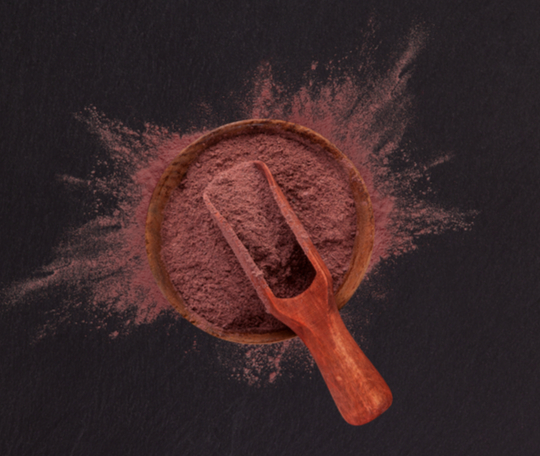PHARMACOLOGY PROFILES
Ibogaine
12-Methoxyibogamine
C20H26N2O
Drug Classification
Tryptamine
Common Names
Iboga
Binomial Nomenclature
Tabernanthe iboga

Tabernanthe iboga

Tabernanthe iboga

Tabernanthe iboga
Overview
Ibogaine is a naturally occurring psychoactive indole alkaloid that belongs to the tryptamine class. It can be found in plants from the Apocynaceae family, such as the root of the Tabernathe iboga tree, commonly referred to as the “iboga tree.” Originally intended for medicinal and spiritual uses in the Bwiti religion in Gabon, Africa, ibogaine has become a globally popular substance for treating addiction and physical withdrawals.
Ibogaine was introduced to the West in the early 1900s. During this time, it was used as a
neuromuscular stimulant. By the 1960s, ibogaine was studied as a cardiovascular drug and received
recognition as a possible anti-addiction treatment for heroin. Though classified as a Schedule I
drug in the US, it is available in one form or another in many other countries, including Canada,
Mexico, and several European countries.
Research into the pharmacology of ibogaine is limited. So far, studies show that it acts primarily as
a serotonergic psychedelic and interacts with various parts of the brain, including transporters and
several receptors, such as opioid, sigma, glutamate, and nicotinic. The complex nature of ibogaine
suggests it can cause serious adverse effects, the most common of which affects the cardiovascular
system. That being said, because of its high affinity for a multitude of receptors and transmitters,
ibogaine has the potential to be even more effective than some traditional psychedelic intervention
methods for addiction, depression and relapse prevention.
Though ibogaine has been known to help treat substance addiction, it is not licensed for therapeutic
use, nor has it been approved for medical research in the US.
Harm reduction practices are highly recommended if using this substance.
Dose and Duration
There are a number of contributing factors that affect one’s experience on ibogaine, including set,
setting, method of consumption, and dose. Ibogaine trips can last upward of 24 to 36 hours, so
precise dose is extremely important.
In a traditional setting, a dose of ibogaine depends on the purpose. For example, for treating
asthenia, one consumes 10 to 30 mg of bark per day. For other purposes, such as treating depression,
fatigue, or as a neuromuscular stimulant, about 200 mg of extracted ibogaine is recommended. When
treating addiction, ibogaine is semi-synthetically produced to ensure an exact dose of 15 to 20
mg/kg.
An ibogaine trip can have some objective and subjective experiences that most users will be able to
reliably articulate upon integration therapy. These occur during isolated phases that include an
initial “waking-dream state” of hallucinatory reality that can last for up to 8 hours. This is
followed by a “reflective and evaluative” second phase, which, coupled with world-blending
dissociation, culminates in a heightened third afterglow stage of “residual-stimulatory effects.”
The “waking-dream state” phase begins 30 minutes to 3 hours after ingesting ibogaine and can last up
to 8 hours. This phase has many subjective memories or fragmented realities which are representative
of the user’s personal experiences throughout their life.
Between the first 4 to 8 hours, the reflective phase begins. This stage can last between 8 to 20
hours and can be contrasted from the first stage by its markedly shifted focus of integrating a more
structural and egotistical assessment of the self. This stage and the therapy after returning to
baseline are paramount to the long-term effects of this medicine.
Lastly, the final stage begins 12 to 24 hours after consumption. This third phase can last 72 hours
or more and focuses heavily on returning to the “real world” with introspective lessons to
incorporate into continued integration therapy and shadow work, including amalgamating this into
personal growth practices.
Because ibogaine is known to cause cardiotoxicity in high doses, more scientists are looking into
microdosing with the substance, though most rituals and historical use consist of high-dose
multi-day trips.
One modernly colloquial “heavy side” of the spectrum is what some users would consider “flood”
dosing, or extremely-high, consecutive multi-day trips on ibogaine. Because a long term, 2+ month
dosage treatment can be costly, users under extreme duress turn to ”flood” dosing. The belief that
compounding multiple manageable sessions into one compacted and ineffable experience, in the hopes
of completely eradicating invasive or life-threatening withdrawal symptoms, is intrinsic to the
original ritualistic context of Ibogaine. However, though cultural views regard high doses of
Ibogaine and its ability to combat deep-seated addiction issues as intrinsic to its pharmacology,
scientific and medical perspectives regard this practice as outdated and fundamentally dangerous due
to toxicity factors and contraindications.
This is not recommended and can lead to serious injury or death. Those with pre-existing heart
conditions should avoid “flood” dosing ibogaine.
Effects
Ibogaine has one of the most complex chemical profiles of any substance. There is almost nothing it
cannot do.
Ibogaine has a high affinity to the N-methyl-D-aspartate (NMDA) receptors, which produces a
ketamine-like effect. It can work as a dopamine reuptake inhibitor and a serotonin reuptake
inhibitor. It can produce anti-addiction effects by antagonism of the alpha 3 beta 4 nicotinic
receptors. Ibogaine also releases one of the most important proteins in the treatment of Parkinson’s
disease, the glial cell line-derived neurotrophic factor (GDNF) protein.
While more research into ibogaine’s pharmacology is still evolving, the results show promising
potential so far.
Experience
It is common to have an unpleasant time during an ibogaine trip. The most common adverse effect is
ataxia (the inability to coordinate muscle movements in a fluid way). Other common side effects
include nausea, dizziness, irregular breathing, and vomiting.
Other shared experiences include:
- Visual Disconnection (Holes, Voids, Structures)
- Enhanced Colors
- Shifting of Colors
- Synesthesia
- Auditory Distortions
- Thought Loops
- Hallucinations
Because ibogaine can last up to 36 hours, users may experience what is known as “dream potentiation.”
Dream potentiation increases the intensity and vividness of sleeping dream states and could result
in more complex and plot-driven dreams. It can also arise as a symptom of hallucinogen persisting
perception disorder (HPPD).
In high dose cases, one may experience what is known as ego death. This is when long-term memory is
significantly suppressed to the point that one cannot recall and comprehend conceptual information
associated with one’s sense of self-hood and identity. It can be a very intense experience for
users, but it is known to come from a state of deep peace, unity, and interconnectedness.
Benefits
Ibogaine is mostly known to help treat addiction. It helps with the withdrawal process, sometimes
completely eradicating physical symptoms. Ibogaine can also help prevent individuals from relapsing
by decreasing urges and desires.
Risks
Though ibogaine has many therapeutic benefits, there are some serious risks involved. The primary
concern is for those with a pre-existing medical condition.
In medical records between 1990-2008, 19 people, mostly with prior medical conditions, died after
about 1 hour to 3 days after using ibogaine.
If used to treat addiction, ibogaine should only be taken under the supervision of a medically
trained professional and in a setting with well-developed protocols in place. In 2015, the Global
Ibogaine Therapy Alliance (GITA) published their clinical guidelines for ibogaine-assisted
detoxification. Their guidelines include context of care, from set and setting to music and
meditation, criteria and considerations, and management of potential risk factors.
Ibogaine can cause life-threatening complications. This substance should not be used in high doses.
Harm reduction practices are highly recommended if using this substance.